As a Scrum Master, I’ve often found myself reflecting on the tools and techniques that enhance our interactions with teams. One of the most underrated yet impactful tools in our arsenal is, surprisingly, a good camera. You might be wondering, “What’s the big deal about cameras?” Well, let me share my thoughts and experiences on this topic.
The Power of Visual Engagement
When working with a team, especially in a remote setting, the ability to see the people you’re engaging with can transform the dynamics of your interactions. Here’s why I believe good cameras are essential for Scrum Masters:
Body Language Matters: A high-quality camera allows you to observe not just faces but also body language. Are team members leaning in, showing interest, or are they slouched back with crossed arms? These non-verbal cues can provide invaluable insights into how engaged your team is with the discussion.
Emotional Connection: Seeing someone’s facial expressions can help you gauge their excitement or frustration. This emotional connection is crucial for fostering a collaborative environment. When you can see a smile or a frown, it becomes easier to adapt your facilitation style to meet the team’s needs.
Creating a Safe Space: Good staging and camera quality can help create a more professional atmosphere. When team members feel they are in a well-prepared environment, they are more likely to open up and share their thoughts. It’s about setting the stage for effective communication.
Recommendations for Scrum Masters
Based on my experiences, here are a few recommendations for Scrum Masters looking to enhance their virtual engagements:
Invest in Quality Equipment: Don’t underestimate the impact of a good camera. Whether it’s a webcam or a DSLR, ensure that it provides clear visuals. This investment pays off in the quality of interactions.
Mind Your Background: The staging of your video calls matters. A clean, professional background can help minimise distractions and keep the focus on the conversation. Consider using virtual backgrounds if your physical space isn’t ideal.
Encourage Camera Use: Foster a culture where team members feel comfortable turning on their cameras. You might need to lead by example, showing that you value face-to-face interaction, even if it’s through a screen.
Be Attentive to Cues: Use the visual information you gather to adapt your facilitation. If you notice someone disengaged, it might be time to change your approach or invite them into the conversation.
Conclusion
In my journey as a Scrum Master , I’ve learned that the tools we use can significantly impact our effectiveness. A good camera is more than just a piece of technology; it’s a gateway to deeper engagement and understanding within our teams. By investing in quality visuals and being mindful of our virtual environments, we can create a more connected and collaborative atmosphere.
So, the next time you set up for a meeting, remember: it’s not just about the agenda; it’s about the people. Let’s make sure we can see them clearly.




























